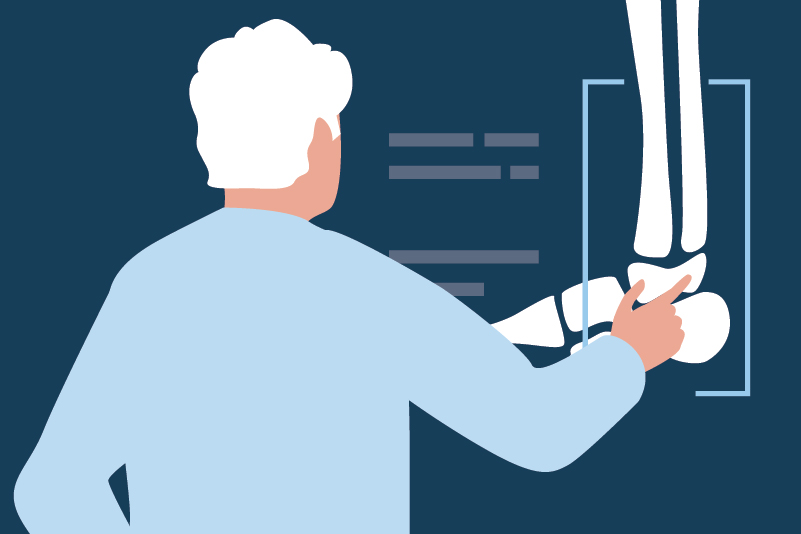#17 X-rays for Non-specific Low Back Pain: A non-specific pain?

Reading Tools for Practice Article can earn you MainPro+ Credits
Join NowAlready a CFPCLearn Member? Log in
- Meta-analysis1: 6 trials (1804 patients): MRI/CT 2 trials & X-ray 4 trials. 0-44% had sciatica
- Relatively good quality but lots of heterogeneity (except pain).
- Short term & long-term outcomes of pain, function, quality of life, mental health and patient satisfaction did not differ significantly
- Pain at 3 months borderline worse with x-ray (Standard Mean Difference 0.19, CI -0.01 to 0.39)
- RCT,2 UK, 421 general practice patients with low-back pain ≥ 6 weeks
- At 3 months statistically significant difference in:
- Proportion of patients still in pain: 74% X-ray vs 65%, Number needed to harm (NNH) 12
- Proportion of patients requiring follow-up doctor visit: 53% X-ray vs 30%, NNH 5
- Self rated health status: 5% worse in X-ray group.
- At 3 months statistically significant difference in:
- After 6 more months, borderline but not statistically significant
- However, ≥ 80% of both groups want X-rays.
- Those with x-rays were more satisfied with the visit
- X-rays findings did not correlate to clinical findings
- Early MRI and CT also do not improve outcomes.1
- A RCT comparing MRI directly to back X-ray also found no difference.3
- Three guidelines from Alberta4, Europe5 and US6 all discourage routine back x-rays for non-specific low back pain.
- Non-specific low back pain is low back pain without recognizable or known specific pathology (e.g. infection, tumour, osteoporosis, ankylosing spondylitis, fracture, inflammatory process, radicular syndrome or cauda equina syndrome).4-6
- These study results/recommendations do not apply to back pain with suspicion of specific pathology (such as progressive neurologic changes or infection)
- These patients warrant further investigation














